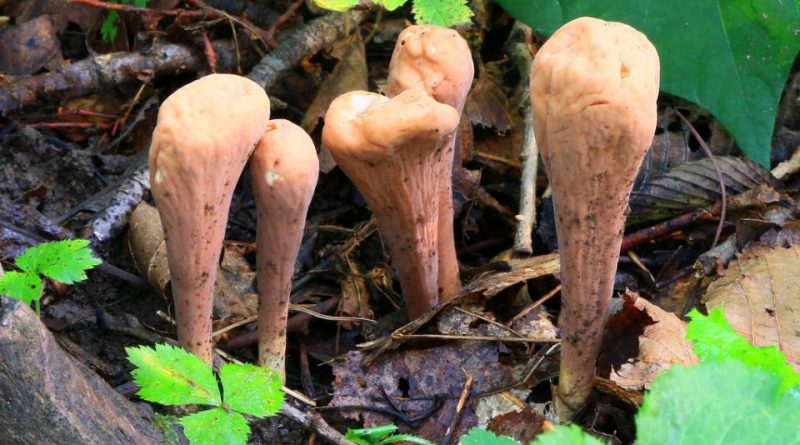Clavariadelphus pistillaris
Clavariadelphus pistillaris
The Mazza d’Ercole (Clavariadelphus pistillaris (L.) Donk, 1933) is a symbiotic mushroom belonging to the Gomphaceae family.
Systematics –
From the systematic point of view it belongs to the Eukaryota Domain, Kingdom Fungi, Basidiomycota Division, Basidiomycetes Class, Phallales Order, Gomphaceae Family and then to the Genus Clavariadelphus and to the C. Pistillaris Species.
Etymology –
The term Clavariadelphus comes from Clavaria which in turn derives from cláva clava, mazza: for the form of the carpophorus and from the Greek ἀδελφος adelphós, brother: as a genus close to Clavaria. The specific epithet pistillaris is due to the shape that resembles that of the pestle of a mortar, from pistillum pestle.
Geographic Distribution and Habitat –
Clavariadelphus pistillaris grows on calcareous soils mainly under beech but it is not infrequent to find it under pine. It is a symbiotic gregarious mushroom that fructifies from spring to autumn.
Recognition –
The Mazza d’Ercole is recognized for having a claviforme carpophore, 8-25 cm tall and with a diameter of 2 – 6 cm, slender or squat, with first smooth surface then furrowed longitudinally, light yellow tending to become brownish-greyish. The meat is white, full, firm and then spongy-fibrous, with a pleasant smell and a bitterish taste. Under the microscope, cream-colored spores are noted.
For an exact recognition, beyond the flattened aspect, trunk of the top of the carpophores, the character of the sweet meat is a good method for distingure the Clavariadelphus pistillaris from C. truncatus. We must be careful because in the Mediterranean habitat there is a third species that is C. flavoimmaturus and the perception of the agarescence of the meat can be very subjective. For this reason, for an exact determination, to cross the morphochromatic data, with a simple reaction (change) of the surface to the KOH is proceed, if the doubts remain to an analysis of micro data.
Cultivation –
Mazza d’Ercole is not a fungus cultivated also for the controversial edibility.
Uses and Traditions –
Clavariadelphus pistillaris is a very curious species with that form of “club” which has earned it the vulgar name of “Mazza d’Ercole” as it recalls the weapon of the famous mythological character. It is a mushroom that enjoys no few admirers despite the not very good taste and bitter. Its edibility is controversial because some texts classify it as not even edule; nevertheless it does not seem to have caused any problems or poisonings, nevertheless it is recommended not to consume it raw. In general it is classified as edible but not valuable.
Preparation Mode –
Clavariadelphus pistillaris is a mushroom that, if consumed, must always be cooked. However, given the controversial opinion on its edibility, its use is not recommended and therefore, for ecological reasons, collection.
Guido Bissanti
Sources
– Wikipedia, the free encyclopedia.
– Cetto B., 2008. Real mushrooms, Saturnia, Trento.
– Pignatti S., 1982. Flora of Italy, Edagricole, Bologna.
– Conti F., Abbate G., Alessandrini A., Blasi C. (edited by), 2005. An annotated checklist of the Italian vascular flora, Palombi Editore.
Attention: Pharmaceutical applications and alimurgical uses are indicated for informational purposes only, they do not in any way represent a medical prescription; there is therefore no liability for their use for curative, aesthetic or food purposes.


